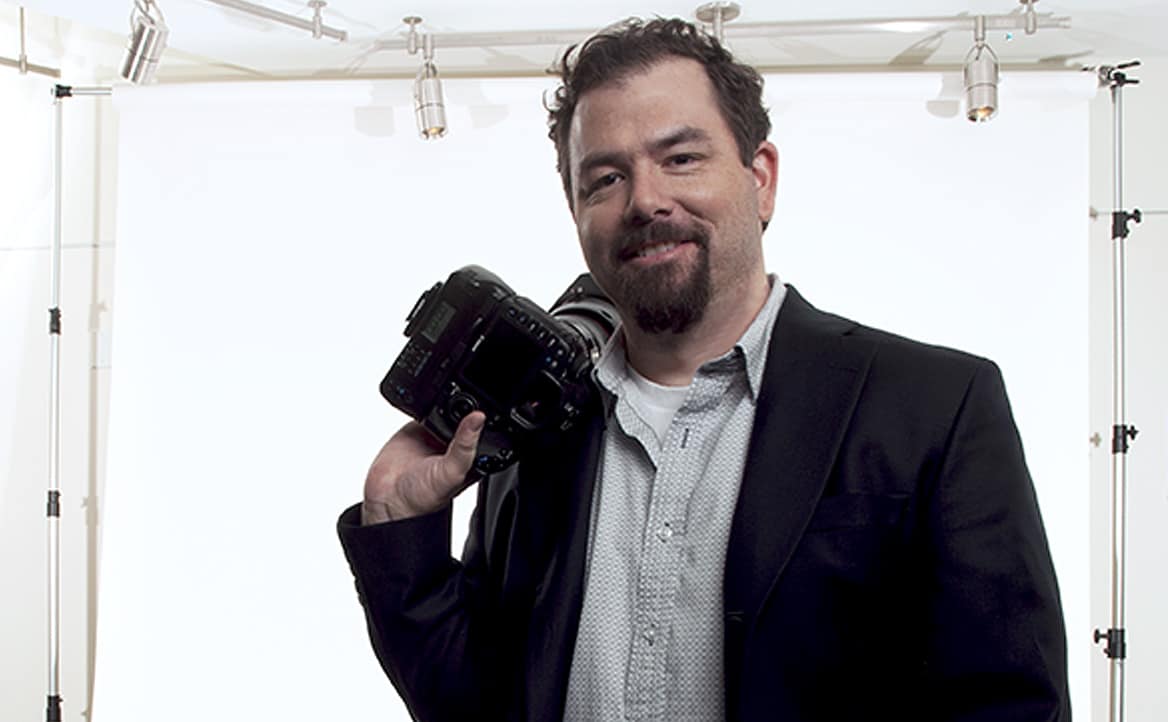Near the end of 2015, Binary Pulse was pleased to welcome Douglas Miller aboard as our new Director of Photography and Editorial. In this role, Douglas will be a critical part of our video production and content generation efforts.
With his strong creative skillset, technical know-how and keen knack for visual storytelling (not to mention a seemingly pathological addiction to anything with a lens on it), Douglas significantly expands the capabilities and sensibilities we can bring to bear for our clients. We’re excited to have him aboard. Take a few minutes to get acquainted.
Q: What got you started as a Director of Photography?
A: When I was around eight years old, my father was working for a cable provider called Group W Cable. He was in marketing and doing a TV promotional with The Disney Channel where he brought cameras into our home to feature a regular family using the service. Once I saw the camera crew, I was hooked.
From that point on, I would do anything to try to get my hands on a camera – even resorting to building my own from shoe boxes and toilet paper rolls. When we would travel to Houston to see my grandparents, I would always take my grandfather’s Canon SLR outside and chart out camera moves, basically teaching myself the art of focus and depth of field.
Once I figured out “how” things were done from a lens POV, movies were never the same for me. I was drawn to certain types of films and their cinematography more than the story – such as Vilmos Zsigmond for Close Encounters and Peter Suschitzky for The Empire Strikes Back – which changed everything for me as a child (and my friends).
Q: What sort of experiences have defined your career to this point?
A: I have been lucky enough to cover a lot of ground over my career. I have shot everything from reality TV to feature films to corporate industrials to documentaries.
One of my more memorable shoots was filming for The Boeing Company, delivering multiple TV and corporate video spots from 2006-2010. I was able to travel all over the country and chronicle some really interesting technology.
But a documentary and commercial spot I shot for The City of Hope were definitely the turning point for me. The people, the mission and the cause just struck me at my core. My father passed away from cancer in 2007 at the young age of 59. So to be able to work for such a change-maker in cancer research was an honor. I took a fully cinematic approach to our content capture, from the set through to editorial. I wanted to make a mini-film, not merely a “video”.
Q: When it comes to the craft of visual storytelling, what’s important to you?
A: Great lensing, great lensing, great lensing. I love to show the audience a different perspective of the story. I love to shoot “through” objects, blending the reality of the scene with an element of organic art, natural lighting and a shallow depth of field that fills out the frame. Every shot should be interesting, even when it’s not natively. A simple shot of a trashcan in an alley can be made “cinematic” if you just find the right angle, light and obstruction.
I also am a big fan of keeping the camera moving, ever so gently – a secret from the 1980s blockbusters. Back then, the cameras were so heavy they were always on a dolly with key scenes and establishing shots slowly moving from side-to-side and/or up to the subject. I love that. It brings back that big budget feel. Everything today, I feel, is handheld. That works for some content (reality, sports or action), but I miss the slow dolly moves.
Q: What attracted you to Binary Pulse?
A: I just love the color orange…just kidding (but I do). Binary Pulse has that technology edge that I so missed in my previous agency as a DP. I’m a “sci-fi-tech-gadget-freak.” I crave new tech like I crave food – especially as the art of cinematography and storytelling becomes more and more digital. I feel Binary Pulse has the top-notch clientele, creative talent and the storytelling ability that I was longing for. We really have strong animation and motion skills to complement live action. I’m excited to be part of the team.
Q: What type of projects do you think are important to Binary Pulse clients? How should they be applying video?
A: Every brand has a story and every team member has a different perspective on how that story impacts them. Today, reality is king and I really feel that our clients’ stories need to be told, from those who best know them. With the impact that social media plays, I think when potential consumers and/or companies are looking to trust a brand, it is important that their real voice be front and center.
In addition to product videos, I feel clients should invest in a brand anthem to be featured on their homepage that talks their talk and puts their mission, vision and values out into the open. I also believe in the follow-up – each anthem should be supported by multiple social media “mini-documentaries” that reinforce those beliefs from senior leadership to frontline employees. You cannot deny a company that puts transparency first, especially with technology brands.
Lastly, I feel our clients can gain value in their current videos or animations by evolving them to include cinematic live action scenes to demonstrate their products. Often times, we as consumers are shown the basics of a technology via animation and its potential benefits via text. But what if we could actually show that in “real life”? Seeing is believing and sometimes just the extra added production value of professional cinematography can enhance the brand perception with consumers dramatically.

